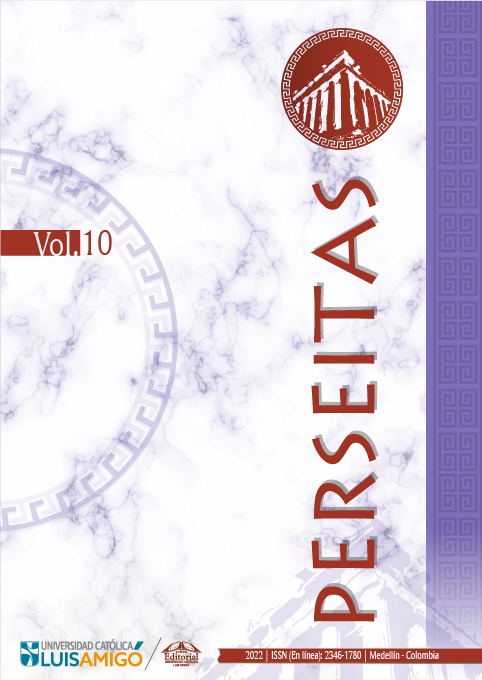Technique, consumption and everyday life: reflections on the work of Jacques Tati
DOI:
https://doi.org/10.21501/23461780.4328Keywords:
Jacques Tati, Mr. Hulot, Technique, Consumption, Culture, Society, SubjectivityAbstract
The purpose of this paper is to analyze the technological development and consumption seen through the cinematographic work of the French director Jacques Tati, especially his character Mr. Hulot, who, between 1949 and 1974, showed in his films the impact of technology (gadgets, devices, appliances) on
the traditional ways of life of French society. Specifically, we take from Tati’s work two elements to materialize this analysis, objects and spaces. From here we show how Tati evidenced with great depth, humor and irony that the social and cultural transformations that were taking place in France, and elsewhere in Europe, in the post-war period, were due, in part, to the exuberant place that
technology and consumption occupied in everyday life. Finally, we conclude, firstly, that consumer societies find in advertising discourse a ubiquitous component of social and cultural legitimization in capitalist societies and, secondly, that technologies and their everyday uses are shapers of new subjectivities that have as a condition of possibility a permanent interaction with objects, hence the central place that technology must occupy in any ontological reflection on who we are in the present.
Downloads
References
Barthes, R. (2010). Mitologías. Siglo XXI.
Baudrillard, J. (2009). La sociedad de consumo. Sus mitos, sus estructuras. Siglo XXI.
Baudrillard, J. (2010). El sistema de los objetos. Siglo XXI.
Benjamin, W. (2014). Baudelaire. Abada editores.}
Castells, M. (2005). La era de la información. La sociedad red. Alianza Editorial.
Cuellar, A. (2003). 50 años con monsieur Hulot: Jacques Tati o la vigencia de un cineasta moderno. Ars Longa. Cuadernos de arte, (12), 123-128. https://roderic.uv.es/bitstream/handle/10550/28211/123-128.
pdf?sequence=1
Daney, S. (2016). Elogio de Tati. Minerva, 27(16), 30-34. https://www.circulobellasartes.
com/wp-content/uploads/2017/02/04_minv27_dossier_cine-1.pdf
De Valck, M. (2005). The Sound Gag: the use of sound for comic effect in the films of Jacques Tati. New Review of Film and Television Studies, 3(2), 223-235.
Foucault, M. (2005). Vigilar y castigar. Nacimiento de la prisión. Siglo XXI.
García, S. (2005). La crisis de la modernidad en la pantalla: el cine de Jacques Tati. Fedro, Revista de Estética y Teoría de las Artes, (3), 31-40.
Goroztiza, J. (1992). La arquitectura según Tati: naturaleza contra artificio. Nosferatu. Revista de cine, (10), 48-55. https://riunet.upv.es/bitstream/handle/10251/40832/NOSFERATU_010_008.pdf?sequence=4
Han, B.-C. (2013). La sociedad de la transparencia. Herder.
Jacobs, J. (2011). Muerte y vida de las grandes ciudades. Capitán Swing Libros.
Lazzarato, M. (2013). La fábrica del hombre endeudado. Ensayo sobre la condición neoliberal. Amorrortu editores.
Lazzarato, M. (2015). Gobernar a través de la deuda. Tecnologías de poder del capitalismo neoliberal. Amorrortu editores.
Lefebvre, H. (1972). La vida cotidiana en el mundo moderno. Alianza Editorial.
Lefebvre, H. (2013). La producción del espacio. Capitán Swing.
Leroi-Gourhan, A. (1971). El gesto y la palabra. Ediciones de la Biblioteca Central de Venezuela.
Ockman, J. (2011). Arquitectura en modo de distracción: ocho tomas sobre Playtime de Jacques Tati. DC PAPERS: revista de crítica y teoría de la arquitectura, (21-22), 11-34. https://upcommons.upc.edu/bitstream/handle/2099/11864/DC%2321-22-03-OCKMAN.pdf?sequence=7&isAllowed=y
Quintana, A. (1992). Monsieur Hulot frente a las nuevas tecnologías de la imagen. Nosferatu. Revista de cine, (10), 40-47.
Sainz, J. (2002). Transparencias míticas: la imagen histórica del vidrio. Arquitectura viva, 82, 2-29.
San Nicolás, H. (2015). Jacques Tati: vivienda experimental y espacio de trabajo a mediados del siglo XX [Tesis de doctorado, Universidad Politécnica de Madrid]. Archivo Digital UPM. https://oa.upm.es/40792/1/HELIA_DE_SAN_NICOLAS_JUAREZ_01.pdf
Sibilia, P. (2008). La intimidad como espectáculo. Fondo de Cultura Económica.
Stiegler, B. (2002). La técnica y el tiempo I. El pecado de Epimeteo. Hiru.
Torres, S. (1992). Jacques Tati: la sonrisa entre todos. Nosferatu. Revista de cine, (10), 6-13.
Veblen, T. (2004). Teoría de la clase ociosa. Alianza Editorial.
Virilio, P. (2003). El arte el motor. Aceleración y realidad virtual. Manantial.
Published
How to Cite
Issue
Section
License

This work is licensed under a Creative Commons Attribution-NonCommercial-NoDerivatives 4.0 International License.
La revista y los textos individuales que en esta se divulgan están protegidos por las leyes de copyright y por los términos y condiciones de la Licencia Creative Commons Atribución-No Comercial-Sin Derivar 4.0 Internacional.
















